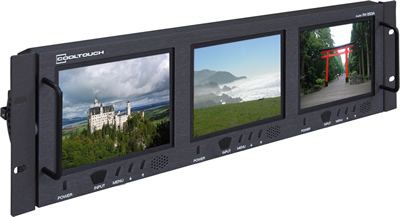 | ||
A video monitor also called a broadcast monitor, broadcast video monitor, broadcast reference monitor or just reference monitor, is a display device similar to a television set, used to monitor the output of a video-generating device, such as playout from a video server, IRD, video camera, VCR, or DVD player. It may or may not have professional audio monitoring capability. Unlike a television set, a video monitor has no tuner (television) and, as such, is unable independently to tune into an over-the-air broadcast like a television receiver. One common use of video monitors is in television stations, television studios, production trucks and in outside broadcast vehicles, where broadcast engineers use them for confidence checking of analog signal and digital signals throughout the system.
Video monitors are used extensively in the security industry with closed-circuit television cameras (CCTV) and recording devices.
Common display types for video monitors
Common monitoring formats for security
